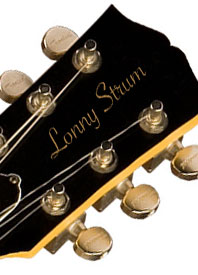
The Digital Divide: Or Not
Conventional thinking is that White American households have greater internet access than Hispanic and African-American households. That’s true, but also not. Huh?
White households do indeed have higher penetration of high-speed broadband connections—66% vs. 51% Hispanic and 49% African-American according to the 2011 Pew Internet and American Life Project.
However..according to a fascinating article in the September 23 New York Post, Digital Divided: Whites are lagging in smartphone usage, white households have the lowest penetration of smartphones. This wasn’t the data I expected though as the article New York Post article points out, there are several reasons why this is so. Here’s the insightful article in its entirety. And you thought the New York Post was just about sports and Page Six….
After all the hoopla, the Apple’s iPhone debut on Friday more than lived up to expectations, with analysts estimating as many as 10 million sales by tomorrow and more than 130 million by the end of the year..
But there is a surprising quirk in the numbers.
More than half of American mobile subscribers — 55.5 percent — are now owners of smartphones of all types, but for white people, the numbers make up just 45 percent, the lowest of any ethnic group, new findings from Nielsen show.
Sixty-six percent of Asians, 56 percent of Hispanics and 55 percent of African-Americans use smartphones to check e-mail, play games and surf the Web.
The report seems surprising in light of data showing a widening economic gap between whites and minorities.
One explanation for the higher smartphone penetration among minorities can be attributed to age. More young people buy smartphones than older people do — 66 percent of those ages 18 to 29 own them, compared with just 11 percent of those over 65. While the young minority population is quickly growing, 85 percent of the 40 million Americans over 65 are white.
The need to own a smartphone among young people, dubbed “digital natives,” is so great that even the majority of those making less than $15,000 a year have one, according to Nielsen.
“It’s become as necessary to your life as owning a car used to be,” said Thelma Young, a graduate student at The New School, who referred to a study in which the majority of teenagers said they’d rather give up their sense of smell than their cellphone.
Young researched Internet access among Native Americans and other ethnicities, and found that minorities who can’t afford home Internet access often substitute it with smartphones.
“A lot of minorities can’t afford Internet in their home. Since they’re already paying a phone bill, they rely heavily on their smartphones to jump over the digital divide,” she said.
In 2011, 66 percent of white American adults had a high-speed broadband connection at home, compared with 51 percent of Hispanics and 49 percent of blacks, according to the Pew Internet and American Life Project. A soaring 80 percent of Asian-Americans, who have the highest income of any ethnic group in the country, had broadband at home.
When it comes to the number of adults who use the Internet, whites lead blacks and Hispanics by about 10 percent.
In addition to having fewer home-based Internet connections, many minorities also have fewer landlines, and therefore rely more on cellphones. Among Hispanic adults, 43.4 percent reported living in a home with no landline, compared with 36.8 percent of blacks and 29 percent of whites.
The Nielsen study is consistent with other findings that minorities spend more time overall on cellphones, more time watching video on smartphones and more time shopping on mobile phones than whites do.
These findings are interesting and the results may be a little counterintuitive. Nonetheless, increasing lower broadband penetration in lower income households remains an important societal issue. In any event, smartphone penetration increases every day as our society become more and more mobile.
More Strumings
- Tips= To Insure Prompt Service
- It’s All Over.
- A DJ Once More.
- States Rights and States Responsibilities.



